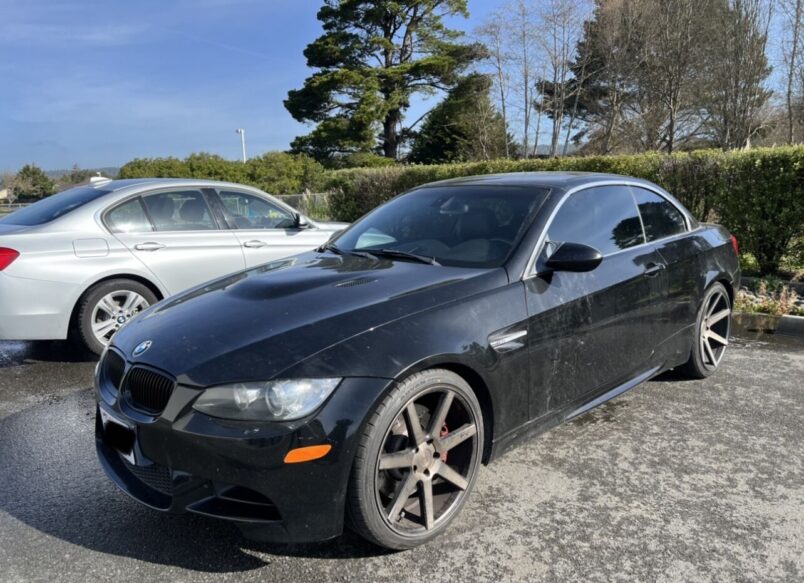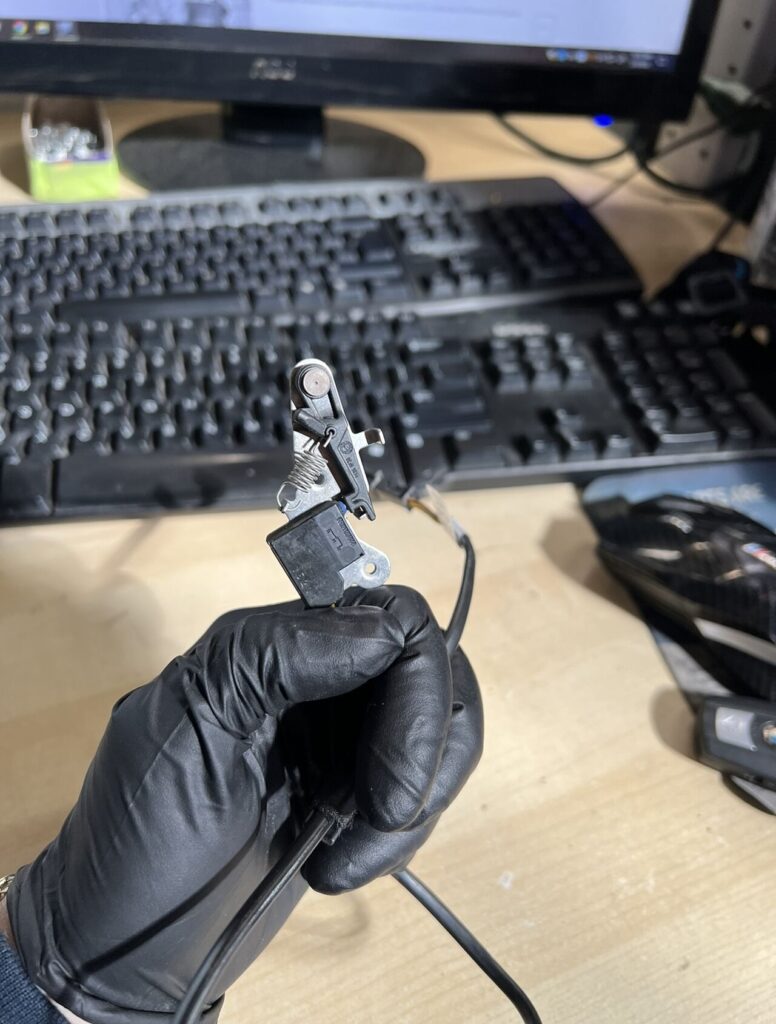Let’s give a warm welcome to BimmerLife’s newest writer, Dylan Smith! Smith is a Certified BMW Mechatronics Technician / ASE Master Technician at BMW of Humboldt Bay in Northern California. He is quite familiar with the marque, owning nine BMWs, with his first being an E36 3 Series when he was in high school. He currently drives a ‘99 540i equipped with a six-speed manual, Dinan goodies, and an awesome sound system. He enjoys diagnosing and helping other BMW owners fix their machines.
It’s 8:00 a.m. on a sunny Saturday near the coast of California. You grab your cup of Joe and remote control to your 414-horsepower, 8,400-rpm-redline chariot. After an epic S65 cold start, you press the convertible top button and notice a check control message indicating a fault along with a flashing red LED above the convertible top button, actuation is not performed, and your power windows are unresponsive. A trip to the dealership is inevitable, right? Not exactly, because you have BimmerLife to the rescue!
The E9x 3 Series production period ranged from 2005-2011 and was offered in three different body classes: saloon (E90), coupe (E92), and convertible (E93). In comparison to the previous generation E46 convertible which used a soft top, BMW opted to utilize a retractable hydraulically controlled three-part hardtop manufactured from sheet steel plate. The roof opens and closes in less than 25 seconds, and when closed, it looks more like a two-door coupe than a convertible—which is quite aesthetically pleasing! The retractable hardtop is a great option for those who prefer to enjoy the symphony of a naturally aspirated 400-plus horsepower V8 in all its roofless glory—however, try not to damage the top because a new retractable hard top is $16,000 at the dealership!

Behold the glory of the retractable hardtop fully opened.
Working as a BMW technician at a dealership allows me to get my hands on various models, from the E to G chassis. I see it all on a daily basis. From oil changes, to engine swaps, and complex bus diagnostics, I’ve seen my fair share of “customer states.” The E9x M3 platform has always been one of my favorite series, yet not many have strolled through the shop.
I have had the pleasure to drive all E9x M3 models in both manual and DCT configurations and highly recommend the convertible with DCT. With that being said, the convertible is approximately 400 pounds heavier than the coupe and you can really feel the additional weight during spirited driving. Now, I have stumbled across E9x M3s with connecting rod bearing and throttle actuator faults, but never a hardtop fault. That was until a customer arrived one day with the concern of, “Customer states roof will not open or close, check and advise.” I guess that’s proof that sometimes you get what you asked for! So, where would you start your diagnosis? Start tearing the interior apart or disassemble the car? Not quite, let’s dive in.
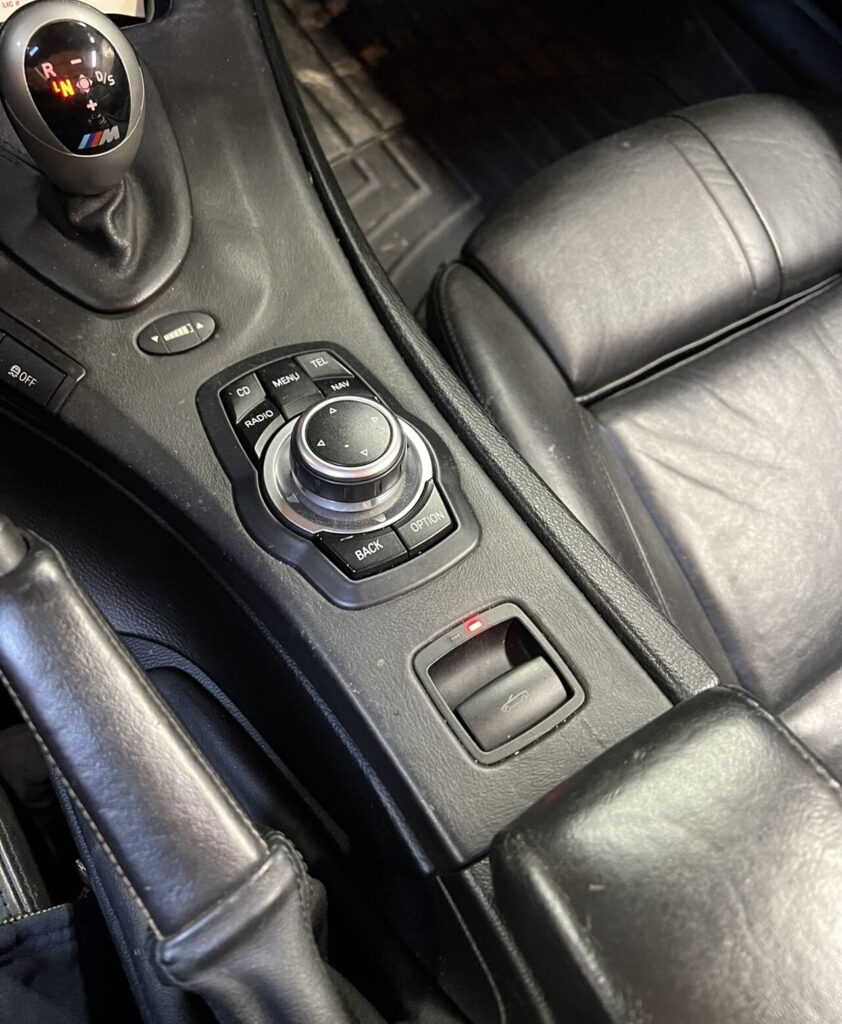
A flashing red LED above the retractable hardtop button indicates a fault in the convertible top system.
My method of diagnosis includes five parts: Verification of customer concern(s), analysis of the system(s) in question, isolation of the component(s), repairing the fault(s), and verifying the concern(s) have been rectified. It is also important to distinguish whether or not the concern is electrical, hydraulic, or mechanical in an effort to stay on the write path towards a solution—for example, testing a wheel speed sensor (electrical fault) when a customer states they have black smoke coming out of the exhaust (mechanical fault).
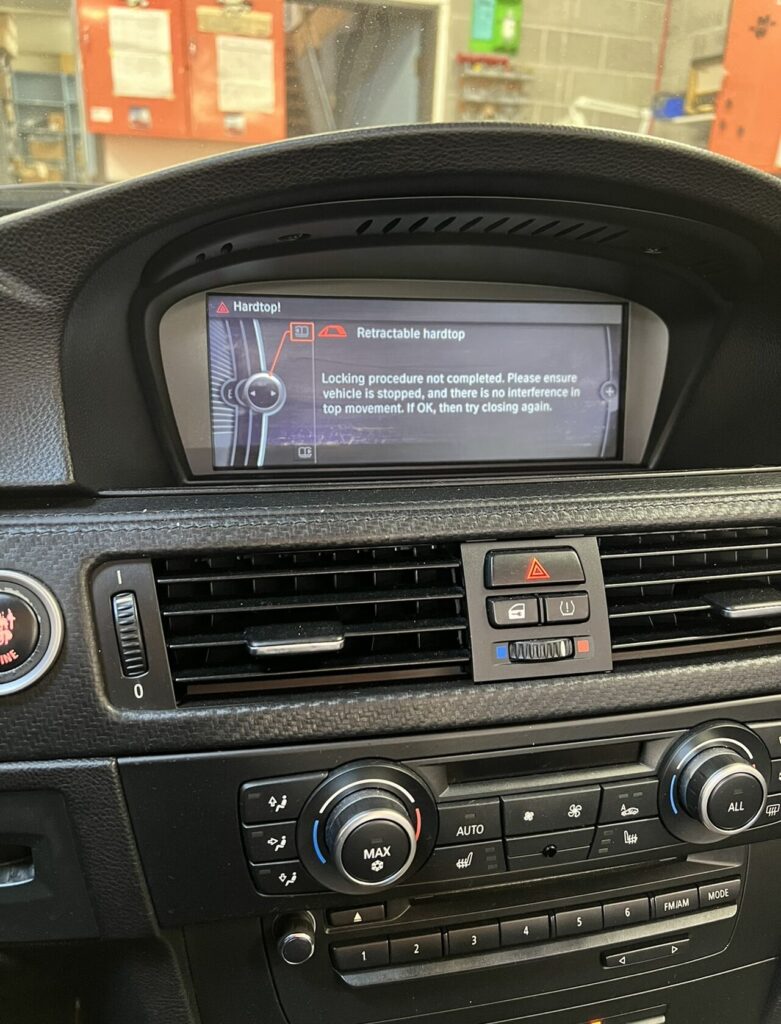
Check the control message for retractable hardtop.
I quickly verified the customer concern of the retractable hardtop not opening or closing, a flashing red light above the convertible top button, a check control message for the retractable hardtop, and the power windows not responding when activated. A battery charger was installed to support the vehicle electrical system, fault memory was interrogated, and I observed multiple CTM (convertible top module faults) stored.
Analyzing the system revealed the CTM communicates via K-CAN to multiple modules including the KOMBI (instrument cluster), DSC (dynamic stability control), JBE (junction box electronics), and FRM (footwell module). The CTM is supplied power via the JBE with KL_30g (twelve volts constant with time disconnection) and an additional power supply via KL_15 (twelve volts constant in run/start). The CTM is green on the control unit tree and sensor values can be observed, which indicates the CTM has power, ground, and bus activity.
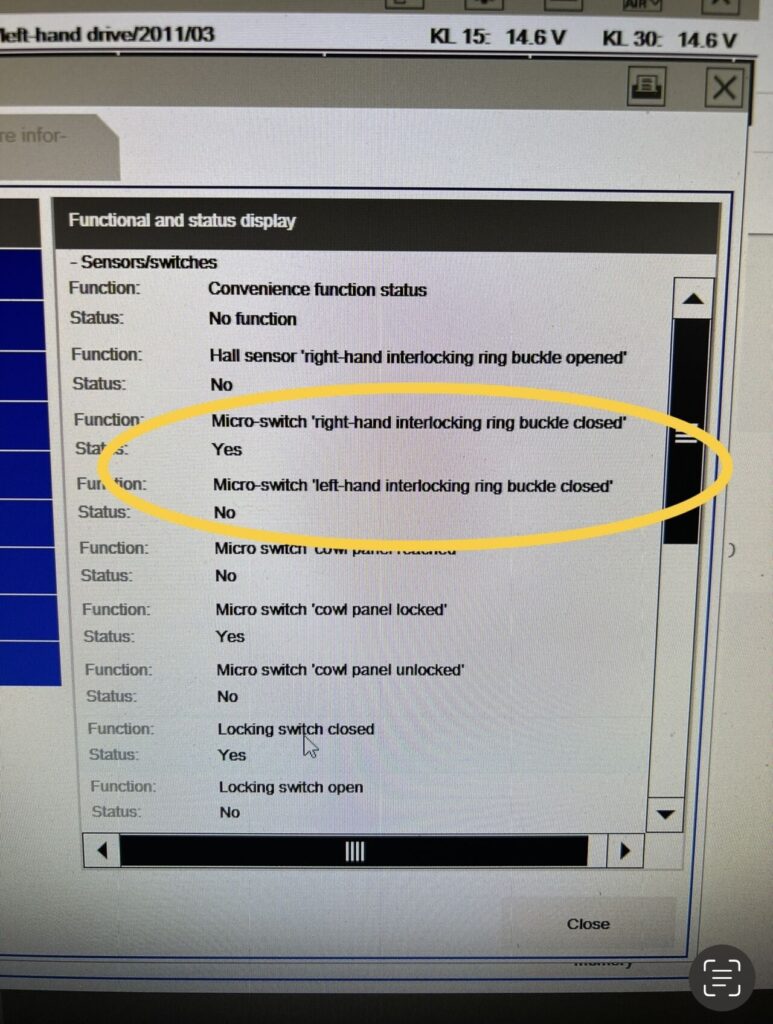
A microswitch left-hand interlocking ring buckle closed states “NO” while the right states “YES.”
With CTM ECU functions successfully called, the fault in particular that caught my attention was the “left-hand interlocking ring buckle closed micro-switch.” When the convertible top was fully closed, the micro-switch for the left and right-hand interlocking ring buckles differed—the left reported “no” on the right and “yes.” This explains the stored fault code for the left-hand microswitch.
Taking a look at how the system is supposed to operate, the position of the retractable hardtop and rear module is monitored by nine Hall effect sensors and 5 microswitches, and the status forwarded to the CTM via the corresponding wiring harness. For successful execution of the retractable hardtop and rear module, all sensors in the convertible top system must be active and transmit plausible values. If one or more sensors do not “agree”, a fault will be set and operation of the retractable hard top will be inhibited.
Based on the data gathered, I concluded that the fault was indeed electrical, so I decided to focus on the left-hand interlocking ring buckle closed microswitch that was reporting an incorrect value, thus throwing a wrench in the top’s operation.
I isolated the micro-switch in question and performed a continuity check, “OL” was observed when measuring across the switch signals, indicating an open circuit. There should be little to no resistance in the microswitch itself. A new microswitch was requested and 24 hours later, FedEx arrived with the component.
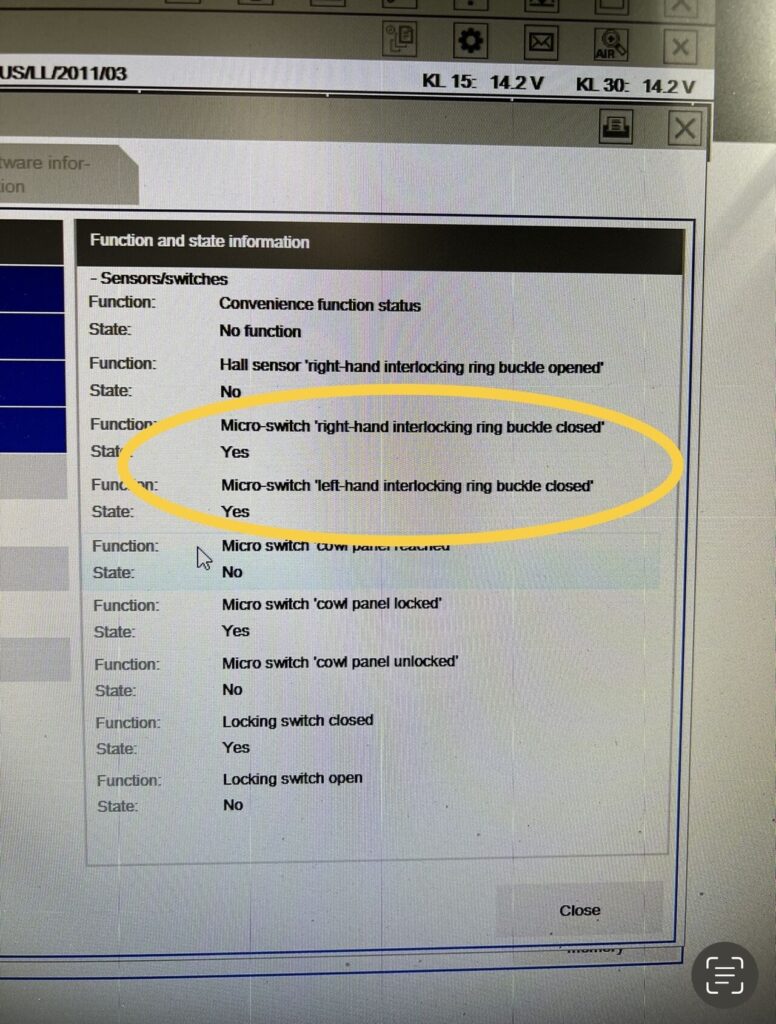
Success!
To check the replacement microswitch, I performed a continuity check of signal circuits and measured 0.1 ohms, which met expectations. To wrap up the repair, I installed the microswitch, bled the hydraulic system, initialized the power windows, and cleared fault memory. When calling CTM ECU functions once again, both the left and right hand interlocking ring buckle microswitches were in agreement, stating “yes” with the roof in the closed position. The retractable hard top and power windows now exhibited nominal behavior, all thanks to one small microswitch replacement. Mission accomplished! —Dylan Smith

